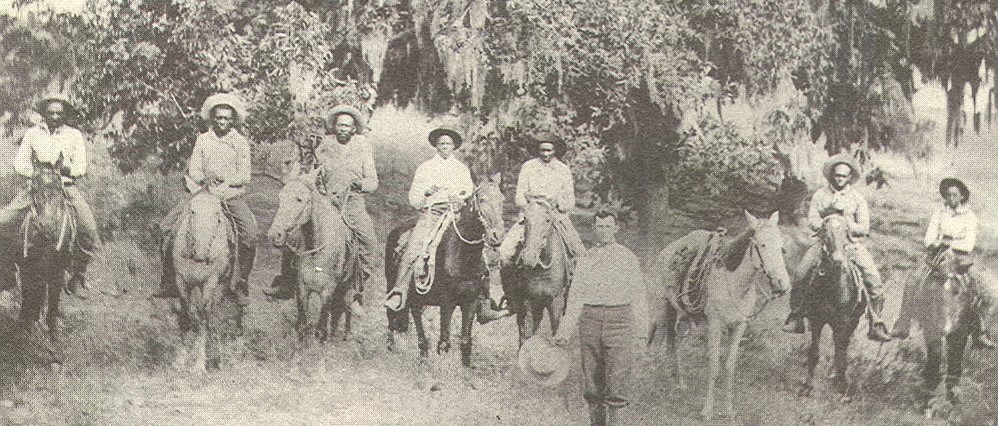The earliest evidence of African Americans as cattle herders (cowboys) in North America can be traced back to colonial South Carolina, where stock grazers from what is now Senegal in West Africa were specifically brought to that colony because of their unique skills. They were brought to Spanish American colonies from Mexico to Argentina for similar reasons.
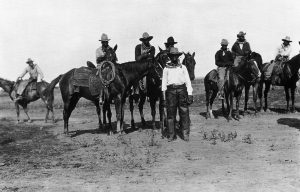
Black Cowboys, Bonham, Texas, 1909
Over the decades the cattle industry, and enslaved Africans who worked it, migrated across the South and reached Texas by the 1850s. With one third of the state’s population comprising enslaved workers, African Americans were the majority of cowboys in Texas in the early 1850s. Enslaved cowboys were assigned the task of catching and tending wild cattle in the Gulf Coast brush country. Working with vaqueros who migrated north from Mexico, these herders often drove long trains of steers led by oxen and trailed by baying dogs.
Francis Richard Lubbock, the Civil War governor of Texas, relied on his five bondsmen to tend the 2,000 cattle on his ranch near Houston, Texas. Lubbock allowed one slave named Willis to acquire cattle and horses to purchase his freedom for himself and his family. James Taylor White, the first Texas cattle baron, used African American drovers for the thousands of cattle he owned in Liberty County, Texas. As early as 1854, Amanda Wildy depended on African American slave cowboys to tend to her herd of cattle.
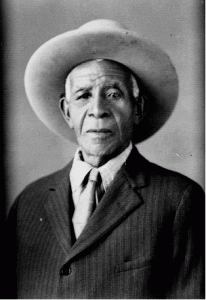
Daniel Webster (80 John) Wallace (Institute of Texan Cultures). In an activity that anticipated the post-Civil War Texas to Kansas cattle drives, Black cowboys trailed herds of cattle south to Mexico and east to New Orleans.
Notable post-Civil War Black cowboys included Pete Staples, a former Texas slave who joined the first cattle drives to Kansas, and Bose Ikard, who worked the Goodnight-Loving Trail from Texas to Denver. Jim Perry was one of the Black cowboys on the 3 million-acre XIT Ranch in the Texas Panhandle, while Daniel (80 John) Wallace, who invented the cattle brand that became his middle name, became Texas’ most successful Black rancher.
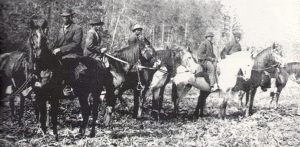
Black Cowhands in Colorado, ca. 1890 (Public Domain)
As the range cattle industry expanded out of Texas after the Civil War, Black cowboys moved across the West along with it, working in every state and territory in the region with the largest numbers in Arizona Territory, California, Nevada, and New Mexico Territory. In Arizona Territory, African Americans John Swain and John Batavia worked for former Texas Ranger John Slaughter on his ranch near Tombstone. Thornton Biggs worked in northern Colorado, Print Olive worked in Nebraska, Nat Love in the Dakota Territory, and ex-Texan Henry Harris became foreman on the Elko County ranch of Nevada Gov. John Sparks. Even future President Theodore Roosevelt employed one Black cowboy on his Dakota Territory ranch.
Four African American cowboys in New Mexico Territory were involved in the Lincoln County range war of 1878 that produced William Bonney (Billy the Kid). Three Black cowboys, George Washington, George Robinson, and Zebrien Bates, rode with Bonney and his “Regulators” while African American John Clark worked for businessman-rancher Lawrence Murphy.
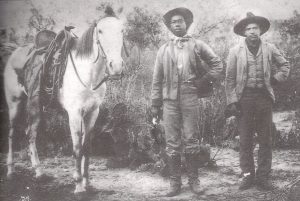
Unidentified Cowboy and Vaquero, Grande Area, ca. 1900 (Institute of Texan Cultures)
Over the decades, African Americans – although still present – became smaller and smaller percentages of herders and drovers as whites moved into the industry. By 1890, the 473 African American cowboys in Texas comprised only 3 percent of the total number in the state. Overall, Black cowboys were about 2 percent of the total in the West by that date, as these workers sought better paying employment in other industries.

